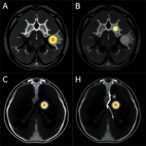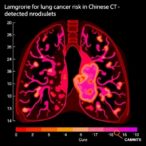
In a groundbreaking study published recently in Nature Communications, researchers have unveiled a crucial molecular mechanism by which skeletal muscle adapts to chronic exercise in a time-dependent manner. The team led by Liu, Xiao, and Choubey discovered that the nuclear receptor Rev-erbα, a pivotal component of the cellular circadian clock, orchestrates muscle’s physiological remodeling in response to prolonged exercise regimens in mice. This discovery sheds new light on how temporal regulation at the genetic and cellular level can shape muscle endurance, metabolism, and performance, potentially opening avenues for chronotherapy and personalized fitness optimization.
Chronic exercise induces myriad adaptations within skeletal muscle, including enhanced mitochondrial biogenesis, improved metabolic flexibility, and greater resistance to fatigue. However, emerging research highlights that the timing of exercise and internal circadian rhythms significantly influence these adaptations. Before this study, the molecular underpinnings linking the circadian clock to exercise-induced muscle plasticity remained enigmatic. The newly reported work places Rev-erbα at the intersection of circadian biology and muscle physiology, demonstrating that its rhythmic activity modulates gene expression networks crucial for muscle remodeling.
Rev-erbα is a transcriptional repressor involved in generating 24-hour rhythms by regulating clock gene transcription and metabolic genes. Located in the nucleus of skeletal muscle cells, Rev-erbα suppresses or promotes target gene expression depending on the time of day. By employing mouse models genetically engineered to lack Rev-erbα specifically in muscle tissue, the authors established that the loss of this receptor severely impairs the time-dependent benefits typically gained from chronic exercise. These impairments included blunted mitochondrial adaptations and disrupted muscle fiber remodeling, indicating Rev-erbα’s indispensable role.
.adsslot_aM0AS6iHCO{ width:728px !important; height:90px !important; }
@media (max-width:1199px) { .adsslot_aM0AS6iHCO{ width:468px !important; height:60px !important; } }
@media (max-width:767px) { .adsslot_aM0AS6iHCO{ width:320px !important; height:50px !important; } }
ADVERTISEMENT
The researchers utilized a comprehensive array of techniques including transcriptomic profiling, metabolomics, and in vivo muscle performance assays over multiple circadian phases. Their data revealed that Rev-erbα coordinates the temporal expression of genes involved in oxidative metabolism, protein turnover, and nutrient sensing pathways. For instance, genes encoding components of the electron transport chain and fatty acid oxidation enzymes followed a Rev-erbα-dependent rhythm, aligning peak metabolic activity with periods of high physical exertion during the animals’ active phase.
Interestingly, the study highlighted how Rev-erbα’s repression of certain catabolic genes during rest cycles might protect muscle tissue from excessive degradation, thereby balancing anabolic and catabolic processes in a circadian manner. This fine-tuned regulation ensures muscle is optimally prepared for daily bouts of exercise stress, underscoring the complexity of muscle homeostasis beyond mere physical loading.
Beyond gene expression, metabolomic analyses showed that metabolites linked to energy production, redox balance, and nucleotide synthesis fluctuate in line with Rev-erbα activity. These metabolic oscillations contribute to muscle endurance and recovery, as they replenish vital cofactors and repair intermediates necessary for sustained muscle function. The findings suggest that subverting the natural rhythm of Rev-erbα, such as through irregular exercise timing or disrupted sleep, could impair metabolic resilience and performance.
The implications of these findings extend far beyond basic science. By identifying Rev-erbα as a gatekeeper of time-dependent muscle adaptation, the study opens exciting possibilities for exploiting circadian biology in exercise medicine. Tailoring exercise programs to an individual’s molecular clock could maximize gains in strength and endurance while minimizing injury risk. Furthermore, pharmacological targeting of Rev-erbα or its downstream pathways might enhance rehabilitation outcomes or mitigate muscle wasting in clinical populations.
Another critical aspect of this research lies in its challenge to conventional wisdom regarding exercise timing. While prior epidemiological studies hinted at time-of-day benefits for training, detailed mechanistic explanations were lacking. Liu and colleagues’ work provides a molecular framework explaining how the intrinsic clock in muscle tissue interacts dynamically with physical activity to control remodeling.
The use of chronic exercise models in mice also allowed the team to dissect long-term adaptations rather than immediate responses, offering insights relevant to sustained fitness regimens. Over multiple weeks, the absence of muscle Rev-erbα consistently impaired mitochondrial content increases and muscle fiber type transformations typically observed with endurance training. This highlights that optimal adaptation is not merely a function of exercise intensity or duration but requires precise temporal coordination.
Moreover, the study delineates a complex network of Rev-erbα controlled genes that include transcription factors, metabolic enzymes, and structural proteins. These genes collectively orchestrate mitochondrial biogenesis, angiogenesis, and extracellular matrix remodeling. This coordinated gene regulation suggests therapeutic strategies to mimic or restore rhythmic gene expression may enhance muscle function in aging or disease.
The authors also discuss potential cross-talk between muscle Rev-erbα signaling and systemic metabolic regulators such as insulin and glucocorticoids, which themselves exhibit circadian fluctuations. This systemic interplay may synchronize muscle adaptation with whole-body energy homeostasis, thus integrating physical activity with broader physiological contexts.
One compelling avenue for future research lies in examining whether similar mechanisms operate in humans and how genetic variability in clock genes influences exercise responsiveness. Such insights could revolutionize personalized training and reveal biomarkers predicting optimal training windows.
Importantly, this study serves as a paradigm illustrating that biology is intrinsically rhythmic, and ignoring temporal dimensions may limit therapeutic or performance outcomes. Recognizing molecular timekeepers like Rev-erbα as modulators of exercise adaptation encourages the development of “chrono-exercise” protocols that harmonize training schedules with endogenous rhythms.
In addition to scientific impact, the findings could influence commercial fitness and wellness industries. Intelligent wearables integrating circadian monitoring could recommend ideal training periods, minimize overtraining, and facilitate recovery by tracking molecular markers reflective of Rev-erbα activity.
As research continues to unravel circadian biology’s implications across health domains, this study uniquely highlights muscle as a tissue whose plasticity is not constant but profoundly modulated by time. Chronic exercise’s benefits are thus the product of a synchronized dialogue between the molecular clock and physical stimuli, with Rev-erbα serving as a central conductor.
This breakthrough expands our understanding of exercise physiology from a static paradigm to a dynamic, temporally nuanced process. It invites a rethinking of how we approach training, rehabilitation, and metabolic health, emphasizing that when we exercise may be as important as how we exercise.
In conclusion, the study by Liu, Xiao, Choubey et al. delineates an elegant molecular mechanism whereby muscle Rev-erbα controls time-dependent adaptive responses to chronic exercise. This work underscores the intricate connection between circadian regulation and muscle physiology, offering promising new strategies for enhancing human health through chrono-biological insights into physical activity.
Subject of Research:
Role of muscle Rev-erbα in regulating circadian, time-dependent adaptations to chronic exercise in mice.
Article Title:
Muscle Rev-erb controls time-dependent adaptations to chronic exercise in mice.
Article References:
Liu, J., Xiao, F., Choubey, A. et al. Muscle Rev-erb controls time-dependent adaptations to chronic exercise in mice. Nat Commun 16, 5708 (2025). https://doi.org/10.1038/s41467-025-60520-y
Image Credits:
AI Generated
Tags: chronic exercise and metabolismcircadian rhythms in exerciseexercise timing and gene expressionmitochondrial biogenesis in musclemolecular mechanisms of exercise responsemuscle adaptation to exercisemuscle endurance and performancepersonalized fitness and chronotherapyRev-erbα and muscle physiologyskeletal muscle plasticitytime-dependent exercise benefitstranscriptional regulation in muscle



